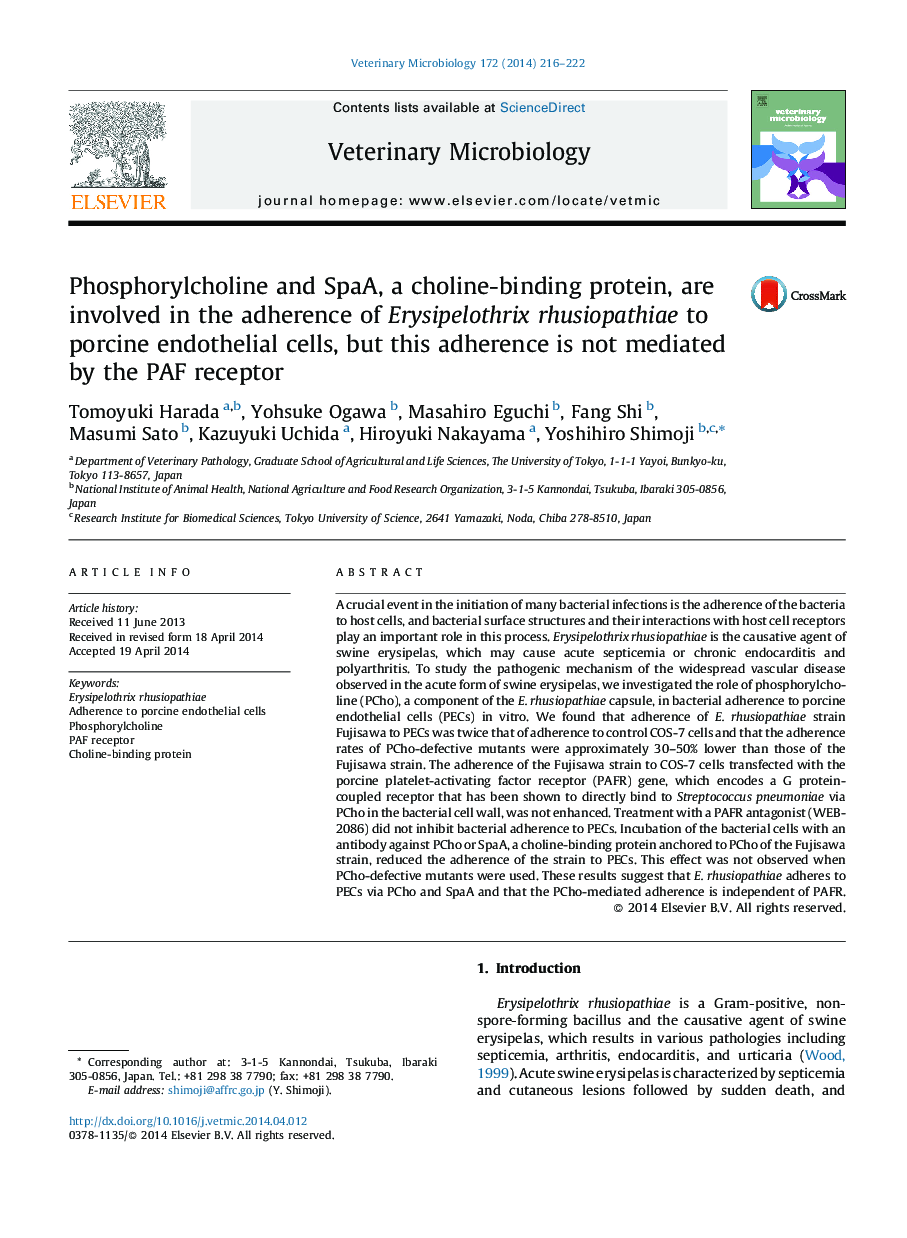| کد مقاله | کد نشریه | سال انتشار | مقاله انگلیسی | نسخه تمام متن |
|---|---|---|---|---|
| 5800829 | 1555360 | 2014 | 7 صفحه PDF | دانلود رایگان |

- Many pathogens utilize the PAF receptor for adherence and invasion in host cells.
- Erysipelothrix rhusiopathiae expresses phosphorylcholine on the cell surface.
- E. rhusiopathiae adheres to porcine endothelial cells via phosphorylcholine.
- The adherence to the endothelial cells is not mediated by the porcine PAF receptor.
- E. rhusiopathiae also adheres to the cells via SpaA, a choline-binding protein.
A crucial event in the initiation of many bacterial infections is the adherence of the bacteria to host cells, and bacterial surface structures and their interactions with host cell receptors play an important role in this process. Erysipelothrix rhusiopathiae is the causative agent of swine erysipelas, which may cause acute septicemia or chronic endocarditis and polyarthritis. To study the pathogenic mechanism of the widespread vascular disease observed in the acute form of swine erysipelas, we investigated the role of phosphorylcholine (PCho), a component of the E. rhusiopathiae capsule, in bacterial adherence to porcine endothelial cells (PECs) in vitro. We found that adherence of E. rhusiopathiae strain Fujisawa to PECs was twice that of adherence to control COS-7 cells and that the adherence rates of PCho-defective mutants were approximately 30-50% lower than those of the Fujisawa strain. The adherence of the Fujisawa strain to COS-7 cells transfected with the porcine platelet-activating factor receptor (PAFR) gene, which encodes a G protein-coupled receptor that has been shown to directly bind to Streptococcus pneumoniae via PCho in the bacterial cell wall, was not enhanced. Treatment with a PAFR antagonist (WEB-2086) did not inhibit bacterial adherence to PECs. Incubation of the bacterial cells with an antibody against PCho or SpaA, a choline-binding protein anchored to PCho of the Fujisawa strain, reduced the adherence of the strain to PECs. This effect was not observed when PCho-defective mutants were used. These results suggest that E. rhusiopathiae adheres to PECs via PCho and SpaA and that the PCho-mediated adherence is independent of PAFR.
Journal: Veterinary Microbiology - Volume 172, Issues 1â2, 6 August 2014, Pages 216-222